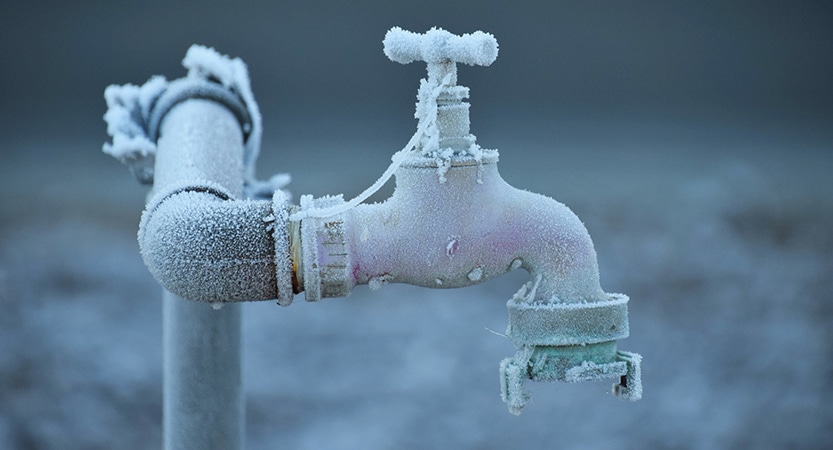Key Methods for Avoiding Frozen Plumbing in Cold Weather
Key Methods for Avoiding Frozen Plumbing in Cold Weather
Blog Article
What are your ideas about How To Avoid Freezing Pipes?

Winter can wreak havoc on your pipes, specifically by freezing pipes. Here's exactly how to stop it from happening and what to do if it does.
Introduction
As temperature levels decline, the risk of frozen pipes increases, possibly bring about pricey repairs and water damage. Comprehending exactly how to prevent icy pipelines is critical for homeowners in cold environments.
Recognizing Frozen Pipes
What triggers pipes to ice up?
Pipes ice up when exposed to temperature levels below 32 ° F (0 ° C) for extended periods. As water inside the pipelines ices up, it broadens, taxing the pipe wall surfaces and possibly triggering them to break.
Dangers and problems
Icy pipelines can bring about water system disturbances, residential property damages, and costly repair work. Burst pipes can flood homes and cause comprehensive structural damages.
Signs of Frozen Pipes
Identifying icy pipelines early can stop them from bursting.
How to recognize frozen pipes
Seek decreased water circulation from faucets, unusual odors or noises from pipelines, and noticeable frost on exposed pipes.
Prevention Tips
Protecting susceptible pipes
Cover pipes in insulation sleeves or make use of heat tape to safeguard them from freezing temperatures. Focus on pipes in unheated or exterior areas of the home.
Heating techniques
Maintain interior areas adequately warmed, particularly areas with plumbing. Open up cabinet doors to allow cozy air to circulate around pipelines under sinks.
Securing Outdoor Pipes
Yard tubes and outside taps
Disconnect and drain pipes garden hoses before winter. Set up frost-proof faucets or cover outside faucets with protected caps.
What to Do If Your Pipelines Freeze
Immediate activities to take
If you suspect frozen pipelines, maintain taps available to soothe stress as the ice thaws. Utilize a hairdryer or towels soaked in hot water to thaw pipelines gradually.
Long-Term Solutions
Structural modifications
Think about rerouting pipelines far from exterior wall surfaces or unheated locations. Include added insulation to attics, basements, and crawl spaces.
Updating insulation
Purchase premium insulation for pipes, attic rooms, and walls. Proper insulation aids preserve consistent temperature levels and lowers the threat of icy pipes.
Conclusion
Preventing icy pipelines needs aggressive procedures and fast reactions. By recognizing the reasons, signs, and safety nets, home owners can safeguard their plumbing throughout winter.
5 Ways to Prevent Frozen Pipes
Drain Outdoor Faucets and Disconnect Hoses
First, close the shut-off valve that controls the flow of water in the pipe to your outdoor faucet. Then, head outside to disconnect and drain your hose and open the outdoor faucet to allow the water to completely drain out of the line. Turn off the faucet when done. Finally, head back to the shut-off valve and drain the remaining water inside the pipe into a bucket or container. Additionally, if you have a home irrigation system, you should consider hiring an expert to clear the system of water each year.
Insulate Pipes
One of the best and most cost-effective methods for preventing frozen water pipes is to wrap your pipes with insulation. This is especially important for areas in your home that aren’t exposed to heat, such as an attic. We suggest using foam sleeves, which can typically be found at your local hardware store.
Keep Heat Running at 65
Your pipes are located inside your walls, and the temperature there is much colder than the rest of the house. To prevent your pipes from freezing, The Insurance Information Institute suggests that you keep your home heated to at least 65 degrees, even when traveling. You may want to invest in smart devices that can keep an eye on the temperature in your home while you’re away.
Leave Water Dripping
Moving water — even a small trickle — can prevent ice from forming inside your pipes. When freezing temps are imminent, start a drip of water from all faucets that serve exposed pipes. Leaving a few faucets running will also help relieve pressure inside the pipes and help prevent a rupture if the water inside freezes.
Open Cupboard Doors
Warm your kitchen and bathroom pipes by opening cupboards and vanities. You should also leave your interior doors ajar to help warm air circulate evenly throughout your home.

I stumbled upon that piece of writing on 6 Ways to Prevent Frozen Pipes while exploring the internet. Sharing is caring. Helping people is fun. Thank you for taking the time to read it.
Book Your Installation Report this page